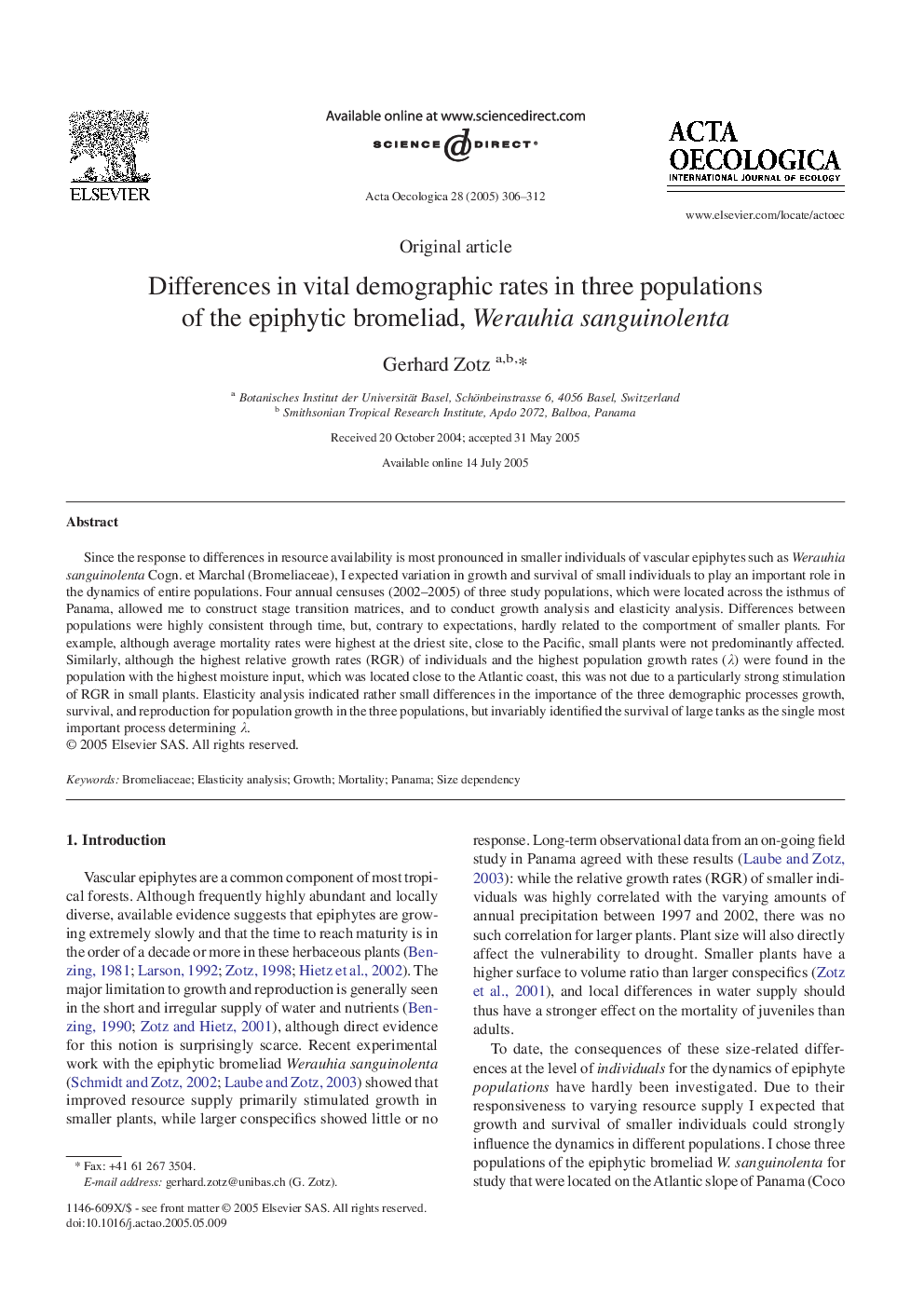| Article ID | Journal | Published Year | Pages | File Type |
|---|---|---|---|---|
| 9444968 | Acta Oecologica | 2005 | 7 Pages |
Abstract
Since the response to differences in resource availability is most pronounced in smaller individuals of vascular epiphytes such as Werauhia sanguinolenta Cogn. et Marchal (Bromeliaceae), I expected variation in growth and survival of small individuals to play an important role in the dynamics of entire populations. Four annual censuses (2002-2005) of three study populations, which were located across the isthmus of Panama, allowed me to construct stage transition matrices, and to conduct growth analysis and elasticity analysis. Differences between populations were highly consistent through time, but, contrary to expectations, hardly related to the comportment of smaller plants. For example, although average mortality rates were highest at the driest site, close to the Pacific, small plants were not predominantly affected. Similarly, although the highest relative growth rates (RGR) of individuals and the highest population growth rates (λ) were found in the population with the highest moisture input, which was located close to the Atlantic coast, this was not due to a particularly strong stimulation of RGR in small plants. Elasticity analysis indicated rather small differences in the importance of the three demographic processes growth, survival, and reproduction for population growth in the three populations, but invariably identified the survival of large tanks as the single most important process determining λ.
Related Topics
Life Sciences
Agricultural and Biological Sciences
Ecology, Evolution, Behavior and Systematics
Authors
Gerhard Zotz,
